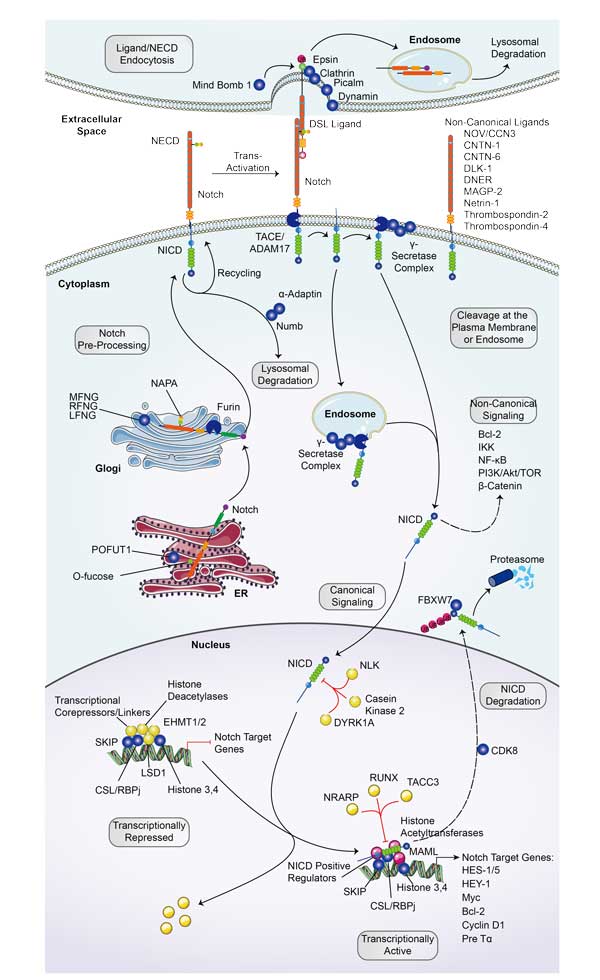BCL6
-
Official Full Name
B-cell CLL/lymphoma 6 -
Overview
The protein encoded by this gene is a zinc finger transcription factor and contains an N-terminal POZ domain. This protein acts as a sequence-specific repressor of transcription, and has been shown to modulate the transcription of START-dependent IL-4 responses of B cells. This protein can interact with a variety of POZ-containing proteins that function as transcription corepressors. This gene is found to be frequently translocated and hypermutated in diffuse large-cell lymphoma (DLCL), and may be involved in the pathogenesis of DLCL. Alternatively spliced transcript variants encoding different protein isoforms have been found for this gene. [provided by RefSeq, Sep 2008] -
Synonyms
BCL6;B-cell CLL/lymphoma 6;BCL5;LAZ3;BCL6A;ZNF51;ZBTB27;B-cell lymphoma 6 protein;BCL-5;BCL-6;protein LAZ-3;zinc finger protein 51;B-cell lymphoma 5 protein;B-cell lymphoma 6 protein transcript;zinc finger transcription factor BCL6S;cys-his2 zinc finger transcription factor;zinc finger and BTB domain-containing protein 27;lymphoma-associated zinc finger gene on chromosome 3
Recombinant Proteins
- Human
- Chicken
- Mouse
- Rhesus macaque
- E.coli
- Wheat Germ
- Mammalian Cells
- HEK293
- GST
- His
- Trx
- Non
- SUMO
- Flag
- Avi
- Fc
- DDK
- Myc
Background
What is BCL6 protein?
BCL6 gene (BCL6 transcription repressor) is a protein coding gene which situated on the long arm of chromosome 3 at locus 3q27. The protein encoded by this gene is a zinc finger transcription factor and contains an N-terminal POZ domain. This protein acts as a sequence-specific repressor of transcription, and has been shown to modulate the transcription of STAT-dependent IL-4 responses of B cells. This protein can interact with a variety of POZ-containing proteins that function as transcription corepressors. This gene is found to be frequently translocated and hypermutated in diffuse large-cell lymphoma (DLCL), and may be involved in the pathogenesis of DLCL. The BCL6 protein is consisted of 706 amino acids and BCL6 molecular weight is approximately 78.8 kDa.
What is the function of BCL6 protein?
It acts as a sequence-specific transcriptional suppressor that regulates transcription of STAT-dependent IL-4 responses in B cells. BCL6 can interact with a variety of transcriptional corepressors containing POZ domains to form complexes that inhibit transcriptional expression of different target genes. In B cells in Germinal Centers (GCs), BCL6 inhibits genes associated with differentiation, inflammation, apoptosis, and cell cycle control, while indirectly upregating genes important for GC response, such as AICDA, by inhibiting micrornas such as miR155. One of the important functions of BCL6 is to allow the rapid proliferation of GC B cells in response to T cell-dependent antigens and to tolerate the physiological DNA breaks required for immunoglobulin class switching and high frequency mutations in somatic cells without triggering a p53/ TP53-dependent apoptotic response. BCL6 also promotes the expression of T(FH) related genes by follicular helper CD4(+) T cells (T(FH) cells), but inhibits the differentiation of T(H)1, T(H)2, and T(H)17 cells, and is necessary for the establishment and maintenance of T and B cell immune memory.
BCL6 Related Signaling Pathway
BCL6 plays a key role in the development and function of follicular T helper cells (Tfh). It is essential for the formation and maintenance of germinal centers by controlling the synaptic adhesion interaction between Tfh cells and B cells to transmit the auxiliary signal CD40L. BCL6 can inhibit the expression of cell cycle suppressor factor and pro-apoptotic gene, so as to promote the process of cell cycle and inhibit apoptosis. BCL6 forms complexes with a variety of histone deacetylases and methyltransferases to regulate gene expression by changing chromatin accessibility, for example by recruiting the EZH2 subunit of the PRC2 complex to promote methylation of H3K27me3, leading to gene silencing. BCL6 regulates the immune response by controlling the expression of genes associated with inflammation, for example, it can inhibit the expression of interferon regulatory factor 4 (IRF4), which in turn affects T cell differentiation.
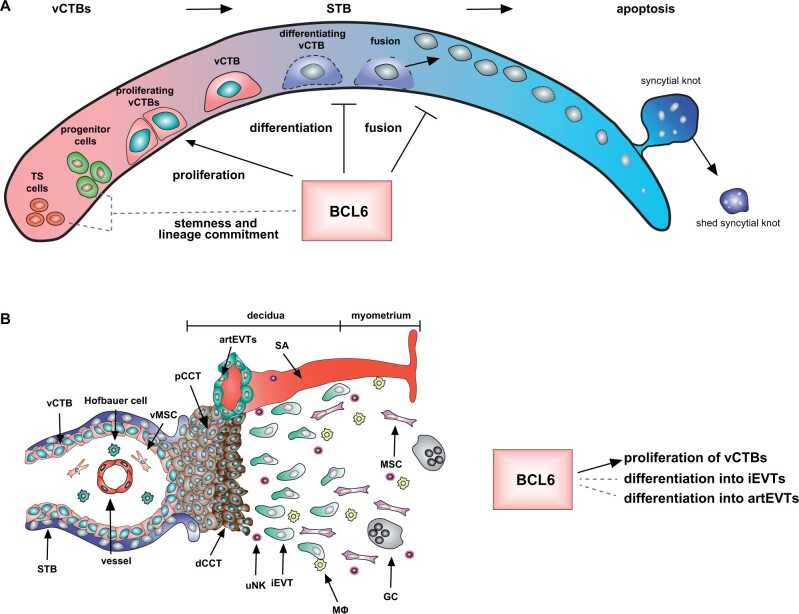
Fig1. BCL6 may affect stemness and differentiation of trophoblast stem/progenitor cells. (Frank Louwen, 2022)
BCL6 Related Diseases
Abnormal expression of the BCL6 protein is associated with a variety of diseases, especially in lymphocyte development and function. In non-Hodgkin lymphoma (NHL), especially diffuse large B-cell lymphoma (DLBCL), chromosomal translocation and overexpression of the BCL6 gene is one of the causes of the disease. In addition, BCL6 also plays a role in autoimmune diseases such as systemic lupus erythematosus (SLE), and changes in its expression levels may affect the course of the disease. In T-cell-related diseases, BCL6 may be associated with the pathological processes of certain autoimmune diseases and chronic infections by influencing the development and function of follicular T-helper cells (Tfh).
Bioapplications of BCL6
BCL6 is a potential therapeutic target in tumors and autoimmune diseases. BCL6 plays a key role in the development of Tfh cells, which are essential for vaccine-induced immune responses. Therefore, the regulation of BCL6 may affect the potency and effectiveness of the vaccine. The expression level of BCL6 can be used as a biomarker of disease status to aid diagnosis and prognosis assessment. In some cell therapy strategies, the expression of BCL6 may affect the function of T cells or B cells, thus affecting the effectiveness of therapy.
Case Study
Case Study 1: Kun Li, 2022
Mutational activation of KRAS is a common oncogenic event in lung cancer, yet effective therapies are still lacking. Here, researchers identify B cell lymphoma 6 (BCL6) as a lynchpin in KRAS-driven lung cancer. BCL6 expression was increased upon KRAS activation in lung tumor tissue in mice and was positively correlated with the expression of KRAS-GTP, the active form of KRAS, in various human cancer cell lines. Moreover, BCL6 was highly expressed in human KRAS-mutant lung adenocarcinomas and was associated with poor patient survival. Mechanistically, the MAPK/ERK/ELK1 signaling axis downstream of mutant KRAS directly regulated BCL6 expression. BCL6 maintained the global expression of prereplication complex components; therefore, BCL6 inhibition induced stalling of the replication fork, leading to DNA damage and growth arrest in KRAS-mutant lung cancer cells.
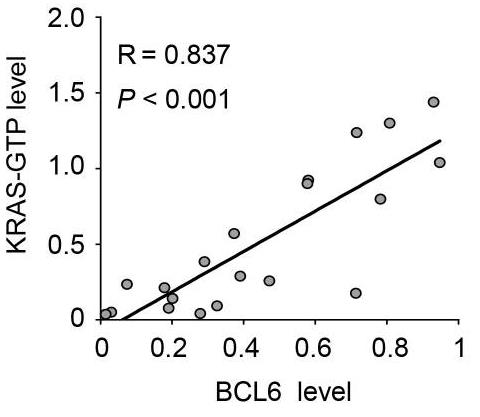
Fig1. Correlation analysis. Correlation between BCL6 and KRAS-GTP protein expression levels.
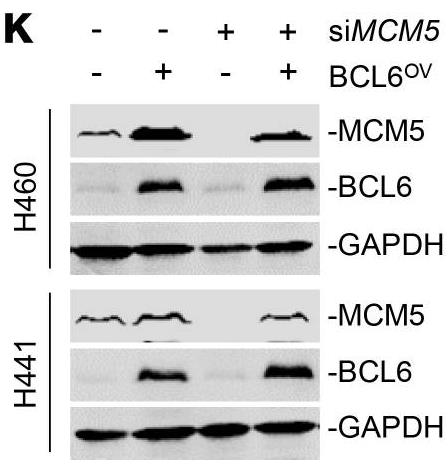
Fig2. BCL6 overexpression reduced MCM5 knockdown–mediated cytotoxicity.
Case Study 2: Lin Zhang, 2023
AML is one of the four major types of leukemia with the 5-year survival rate of patients is less than 20% and chemotherapy resistance remains the major obstacle to the treatment failure of AML. Researchers identified WK499, a small molecule compound that can bind to BCL6BTB structure. Treatment with WK499 hinders the interactions between BCL6 with its corepressor proteins, resulting in a remarkable change of BCL6 downstream genes and anti-proliferative effects in AML cells, and inducing cell cycle arrest and apoptosis. They verified that AraC and DOXo could induce BCL6 expression in AML cells, and found that WK499 had a synergistic effect when combined with chemotherapeutic drugs. They further proved that WK499 and AraC could achieve a better result of inhibiting the growth of AML in vivo.
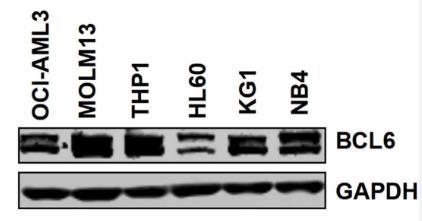
Fig3. Western blotting detected BCL6 expression in 6 strains of AML cells.
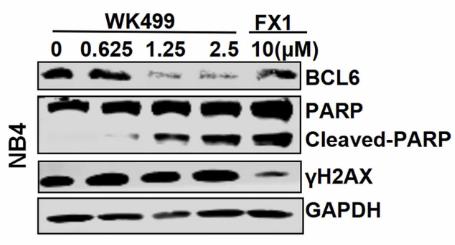
Fig4. After 24 h treatment with WK499 and FX1, western blotting detected the expression of BCL6 and the changes of DNA damage repair related proteins.
Quality Guarantee
High Purity
.jpg)
Fig1. SDS-PAGE (BCL6-158H)
.
.jpg)
Fig2. SDS-PAGE (BCL6-159H)
Involved Pathway
BCL6 involved in several pathways and played different roles in them. We selected most pathways BCL6 participated on our site, such as FoxO signaling pathway,Transcriptional misregulation in cancer, which may be useful for your reference. Also, other proteins which involved in the same pathway with BCL6 were listed below. Creative BioMart supplied nearly all the proteins listed, you can search them on our site.
| Pathway Name | Pathway Related Protein |
|---|---|
| FoxO signaling pathway | SETD7,SGK2,PTENA,ATM,GABARAPA,FOXO4,FOXO3,TNFSF10,PDPK1B,GRM1 |
| Transcriptional misregulation in cancer | ETV5,HDAC1,KLF3,ERG,PDGFA,NTRK1,PROM1,TCF3,MPO,ASPSCR1 |
Protein Function
BCL6 has several biochemical functions, for example, RNA polymerase II regulatory region sequence-specific DNA binding,chromatin DNA binding,chromatin binding. Some of the functions are cooperated with other proteins, some of the functions could acted by BCL6 itself. We selected most functions BCL6 had, and list some proteins which have the same functions with BCL6. You can find most of the proteins on our site.
| Function | Related Protein |
|---|---|
| transcriptional repressor activity, RNA polymerase II transcription regulatory region sequence-specific binding | CDX2,ASCL3,CSDA,KLF6A,VAX2,KLF12,CHCHD3,BCL6AB,CGGBP1,SATB1 |
| metal ion binding | ZKSCAN17,CYP1C2,LMAN1,TRIM43A,ATP1A4,CYP2P8,RAB11FIP4A,STK32C,PFKMA,SDHC |
| RNA polymerase II regulatory region sequence-specific DNA binding | ZMYND11,ETV3,SKINT8,NFIL3,STAT4,MEF2D,GATA1A,EOMES,ZNF8,HOXD8 |
| transcription factor activity, sequence-specific DNA binding | ZNF202,POU6F2,HOXB8A,ZNF286A,TSC22D4,TCF7L2,PFDN1,Trl,ZNF624,ZNF483 |
| intronic transcription regulatory region sequence-specific DNA binding | GRHL2,NKX2-1 |
| chromatin binding | MEF2A,FEZF2,TLE1,NSBP1,ARID3C,DNAJC2,UBE2T,ATAD2B,SMARCD1,C10orf119 |
| chromatin DNA binding | RXRA,HIST1H1A,EP300,VAX1,GRHL1,HIST1H1E,THRB,PER1,H2AFZ,H2AFY2 |
| sequence-specific DNA binding | TLX2,NKX2.7,MTA3,EMX3,HLFB,NKX6.3,POU4F2,SOX21A,NFYBA,TBX5A |
| protein binding | ZBP1,MAFG,FNTB,DIABLO,ZNF230,RUVBL2,TECR,KCNA3,TOM1,MAT2A |
Interacting Protein
BCL6 has direct interactions with proteins and molecules. Those interactions were detected by several methods such as yeast two hybrid, co-IP, pull-down and so on. We selected proteins and molecules interacted with BCL6 here. Most of them are supplied by our site. Hope this information will be useful for your research of BCL6.
BCL6B;ZBTB7B;LIMS3L;AES;TRAF1;SIAH1;KIFC3
BCL6 Related Signal Pathway
Resources
Gene Families
Related Services
Related Products
References
- Basso, K; Dalla-Favera, R; et al. Germinal centres and B cell lymphomagenesis. NATURE REVIEWS IMMUNOLOGY 15:172-184(2015).
- Gao, FJ; Yang, YY; et al. BRAD4 plays a critical role in germinal center response by regulating Bcl-6 and NF-kappa B activation. CELLULAR IMMUNOLOGY 294:1-8(2015).


